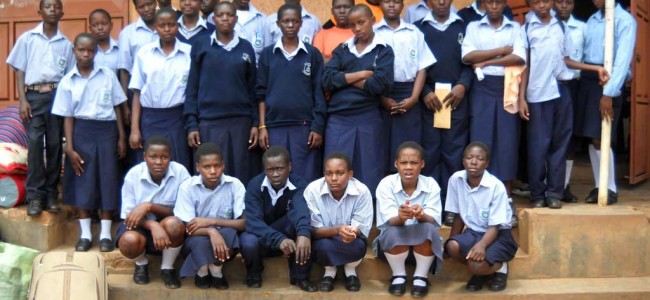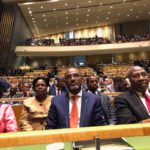World Bank’s Board of Executive Directors have approved $150 million to enable greater access to higher quality secondary education among Ugandan children in safer and better equipped learning environments that are also supportive of girls’ education. The project is financed by an International Development Association credit of $90 million, and a grant of $60 million from the Window on Host Communities and Refugees.
The Uganda Secondary Education Expansion Project (USEEP) will directly benefit about 2.5 million learners. A total of 116 new lower secondary day-schools will be constructed, and 61 schools will benefit from additional classrooms in underserved districts, creating 70,300 new spaces for learners, including 30,000 in areas hosting refugees. Schools will be fully furnished and equipped to accommodate two streams of students. The project will provide student textbooks and teacher guides, support continuous teacher professional development, and implement an accelerated education program for children who are not currently attending school.
“Uganda needs to expand access to secondary education to enhance its human capital. This is essential if Uganda is to improve the future wellbeing of its citizens while also enabling the economy to grow through their increased productivity,” said Tony Thompson, World Bank Country Manager. “This project aims to provide new school spaces while at the same time creating a conducive learning environment which is safe, promotes students’ personal growth and self-esteem, and increases retention for both boys and girls. It includes special measures to reduce the prevalence of early pregnancies and to assist young mothers to re-enter lower secondary education when they drop out.”
Uganda is a pioneer in Sub-Saharan Africa in implementing policies to achieve universal access to primary and secondary education. Since the introduction of Universal Secondary Education, enrollment has increased at an average of 6 percent annually – growing from a total of 954,000 students enrolled in 2007 to around 1.5 million in 2017. The rate of growth, however, remains low compared to 25 percent in Kenya and 16 percent in Rwanda. Further, the enrollment rate at the secondary level in Uganda has stagnated since 2007 measuring only 28 percent in 2017, much below the rates in neighboring countries. Fifty-nine percent of secondary schools in Uganda are non-government.
A big percentage of learners drop out or fail to meet the minimum proficiency in reading and mathematics by the time they are completing basic education due to insufficient spaces in public schools and learning aids and low levels of skilled and motivated teachers. Children from poor families and those in underserved areas are less likely to learn, while early pregnancy, child marriage and the high cost of schooling are the main reasons why few girls complete secondary education. In refugee hosting districts, about 11 percent of refugee children are enrolled in secondary education, of which 33 percent are girls; compared to 18 percent for the host communities – far below the national average of 28 percent. Uganda is the largest refugee hosting country in Africa and third largest in the world with nearly 1.4 million refugees.
Uganda’s current budget expenditure on education is among the lowest in the region. During the last five years, education expenditure as a share of the national budget was declining in Uganda, reaching 10% in 2019/20 while the average for Sub-Saharan Africa (SSA) is 16% and has been steadily increasing over the same period.
“Uganda’s school age population is growing very fast increasing demand for quality education. This project is following a new model of expanding secondary education in Uganda that optimizes capital investment as well as recurrent costs while introducing quality measures. We hope that the proposed model will enhance prospects for further sustainable expansion of secondary education in Uganda,” said Kirill Vasiliev, Senior Education Specialist and Task Team Leader.
USEEP complements other World Bank support to improve education in Uganda. The recently completed Teachers and Schools Effectiveness Project (funded by Global Partnership for Education and managed by the Bank) focused on primary education and early childhood development (ECD). As a result of the project, more than 17,000 teachers were trained in early grade reading and 13 million math and English textbooks were delivered improving the pupil-textbook ratio from 14 at baseline to two. About 28% of pupils can read 20 or more words per minute compared to 13% in 2016. An e-inspection system is in place to monitor and support school performance.
A draft Early Childhood Development Policy has developed, while ECD caregivers from more than 2,500 centers have been trained and are providing care to more than 83,000 pupils across the country. A total of 929 classrooms with latrines for both girls and boys and rain harvesting tanks have been constructed benefitting 55,200 pupils. The Uganda Skills Development Project, Second African Centers of Excellence Project and other operations with educational components are currently under implementation.







